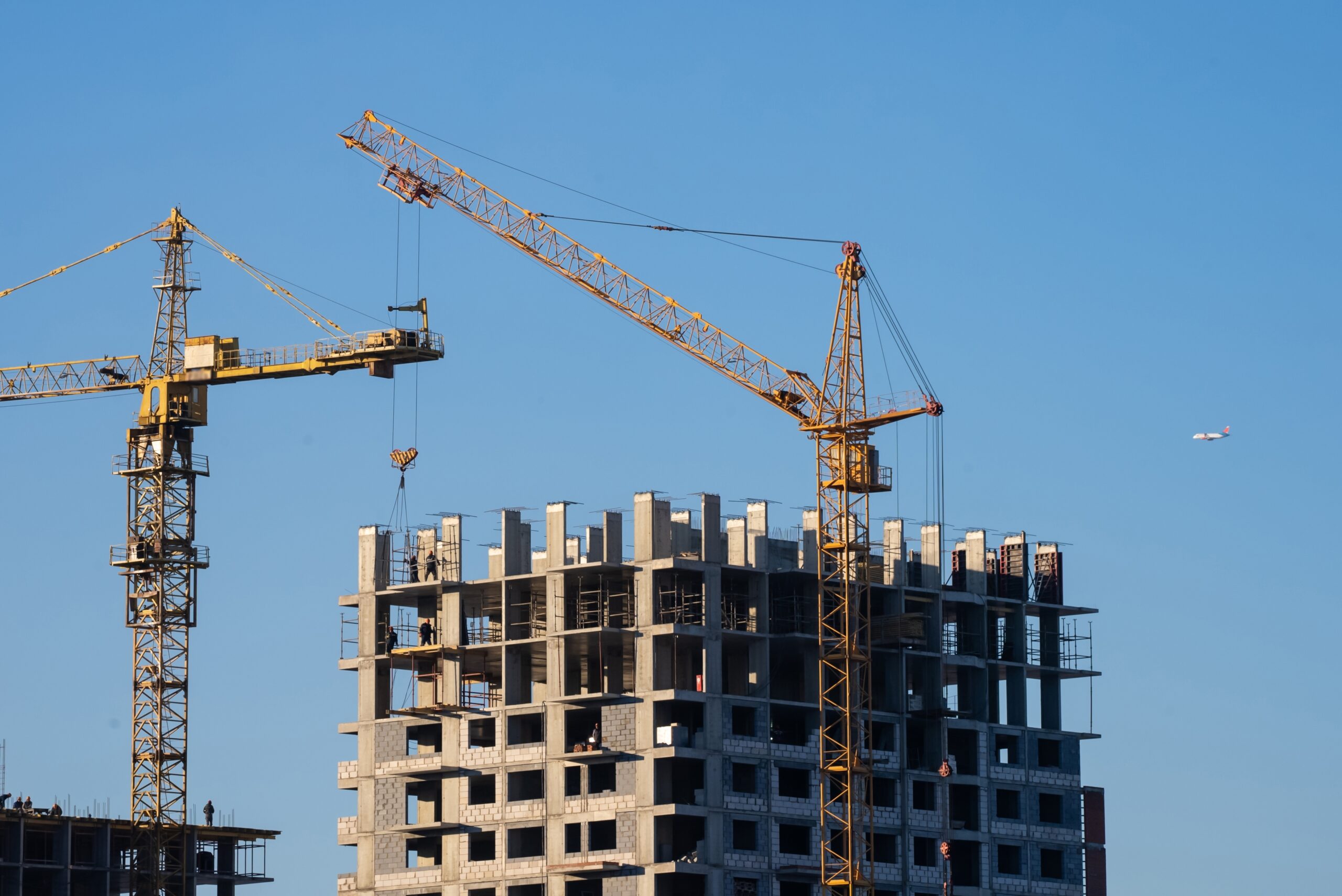Subscribe
The Commercial Tenancy Relief Scheme is much-needed support for businesses impacted by the 2021 Covid-19 lockdowns
In August 2021, the Victorian Government addressed rent relief needs for commercial tenants. It released the Commercial Tenancy Relief Scheme Regulations (Regulations) in response to the Covid-19 lockdowns. The Regulations:
- Reintroduce the Commercial Tenancy Relief Scheme (Scheme) that previously ended on 28 March 2021
- Apply retrospectively from 28 July 2021
- Will end on 15 January 2022
Due to the complexity of the Regulations and the significant implications for landlords and tenants, careful consideration must be given to the requirements under the Regulations, such as the new qualifying criteria and strict timeframes.
What are the eligibility requirements under the Regulations?
To be eligible for rent relief under the Scheme, commercial tenants must satisfy various tests including:
1. Eligible lease test
The Regulations only apply to eligible leases, being retail or non-retail commercial leases or licences:
- In effect on or before 28 July 2021 (or varied or renewed after 28 July on substantially the same terms); and
- Under which the tenant is an eligible tenant (see eligible tenant test below).
Importantly, an eligible lease does not include a retail or non-retail commercial lease or licence:
- Under which the premises is entirely or mostly used for agricultural and farming activities; and
- Where the tenant is a listed corporation or a subsidiary of a corporation.
2. Eligible tenant test
A tenant is an eligible tenant if the tenant:
- Is an entity that, carried on a business in Australia, was a non-profit body or was a particular class of deductible gift recipient (as of 28 July 2021);
- Is an SME entity with an annual turnover of less than $50 million (at the group level) for the financial year ending 30 June 2021. Alternatively, if the tenant was not a business or a non-profit entity for the whole financial year, it is likely to have a turnover of less than $50 million for the financial year ending 30 June 2021;
- Satisfied the decline in turnover test (see below);
- Is not a listed corporation or a subsidiary of a corporation; and
- Is not subject to any of the exclusions listed in the Regulations, such as Australian banks, government entities and subsidiaries of those entities.
3. Decline in turnover test
A decline in turnover is calculated by comparing the tenant’s recent turnover in 2021 to the tenant’s pre-pandemic turnover in 2019.
Firstly, the turnover test period must be established:
The tenant began trading (whether or not at the premises) | Turnover test period |
Before 1 April 2021 | At the tenant's election, a consecutive 3 month period between 1 April 2021 and 30 September 2021 (inclusive), commencing on the first day of a month |
After 1 April 2021 | A turnover test period agreed between the tenant and the landlord negotiated in good faith |
Secondly, the comparison turnover must be determined:
The tenant began trading (whether or not at the premises) | Comparison turnover |
Before 1 April 2019 | The 3 month period in 2019 that corresponds with the turnover test period |
Between 1 April 2019 and 31 March 2020 | The sum of the tenant's turnover for each whole month after the tenant commenced trading and before 1 April 2020 divided by the number of whole months of trade multiplied by 3 |
Between 1 April 2020 and 31 March 2021 | The sum of the tenant's turnover for each whole month after the tenant commenced trading and before 31 July 2021 divided by the number of whole months of trade multiplied by 3 |
On or after 1 April 2021 | The tenant's turnover from the date that the tenant began trading to 31 July 2021, divided by the number of days the tenant was trading and multiplied by 92 |
A tenant satisfies the decline in turnover test if the tenant’s turnover for the turnover test period is at least 30% lower than the tenant’s comparison turnover (or 15% lower if the entity is a charitable organisation).
However, there are various other methods for comparing turnover in certain circumstances, for example:
- Where the tenant began trading after 1 April 2021;
- Where there was a restructure of the tenant’s business; or
- The tenant had an irregular turnover
The Regulations define turnover in the same way as GST turnover. Specifically, the Regulations:
- Include any turnover derived from online sales or sales from other premises operated by the tenant;
- Exclude any Commonwealth Government Covid-19 grants or financial assistance payments provided to the tenant;
- Include any State Government Covid-19 grants or financial assistance payments provided to the tenant
This represents a broadening of eligibility for rent relief, as tenants can choose the months in which to calculate turnover loss. Further, unlike the 2020 Regulations, turnover is not expressly linked to turnover associated with the premises.
How should tenants make rent relief requests?
1. Request and evidence
A tenant seeking relief must make a written rent relief request to the landlord before 30 September 2021. It must be accompanied by a statement from the tenant that:
- The tenant is an eligible tenant;
- The tenant satisfies the turnover decline requirements, including specific details of the relevant turnover comparison method;
- The minimum reduction in rent needed to accommodate this decline; and
- Any other circumstances the tenant would like the landlord to consider
Within 14 days of making this request, the tenant must provide the landlord with:
- Evidence of the turnover figures used in the request (either extracts from accounting records, business activity statements, or bank or accountant statements); and
- A statutory declaration that all the information and evidence is true
2. Three strikes, you’re out
If the tenant does not provide the required evidence and statutory declaration within 14 days after the request, it lapses. The tenant may make a new request for rent relief, however if they allow three requests to lapse, the tenant cannot make a further request for rent relief.
What happens with the landlord’s rent relief offer?
The landlord must make a rent relief offer within 14 days after receiving the required evidence (unless otherwise agreed between the parties) that:
- Relates to 100% of the total rent during the rent relief period (see below). Where the rent is a gross rent including outgoings, the rent relief must be offered including outgoings;
- As a minimum, is proportionate to the tenant’s decline in turnover;
- Provides that at least 50% of rent relief offered is in the form of a rent waiver (unless otherwise agreed between the parties) with the balance to be deferred;
- Takes into account any part payments by the tenant, and any other circumstances mentioned by the tenant in the application.
What is the rent relief period?
The landlord’s offer of rent must be in respect of the rent relief period being either:
- 28 July 2021 to 15 January 2022, if the tenant makes a compliant rent relief request (with evidence of turnover) on or before 30 September 2021; or
- If the tenant makes a compliant rent relief request after 30 September 2021, the period commencing on the date of the tenant’s request and ending on 15 January 2022.
How is the landlord’s offer accepted?
Within 14 days after receiving the landlord’s offer, the parties must negotiate in good faith to reach a rent relief agreement. If the parties have not agreed within 14 days and the tenant has not referred the matter to the Small Business Commission, the tenant will be deemed to have accepted the offer.
What are the other key provisions?
Other key provisions in the Regulations include:
- If a request for rent relief is made before 30 September 2021, there is a mandatory reassessment on 31 October 2021. This allows amendment of the rent relief agreement to reflect more current turnover figures. The tenant is required to submit updated turnover figures demonstrating a decline in turnover and the rent relief will be adjusted according to any change in the turnover decline
- Landlords cannot increase rent during the protection period (28 July 2021 to 15 January 2022) unless otherwise agreed by the parties in writing. Landlords cannot claim this increase at a later date
- If a rent relief arrangement has been made, a landlord cannot evict a tenant or re-enter the premises for non-payment of rent if, during the protection period:
- The tenant pays the amount of rent and outgoings in accordance with a rent relief agreement;
- The tenant is unable to trade due to sickness or injury resulting from a natural disaster (irrespective of whether a rent relief request has been made);
- Once a rent relief request has been made, but before an agreement is reached, the tenant pays a portion of the rent, equal to the rent due as reduced by the tenant’s decline in turnover, as set out in the rent relief request
A tenant can still be terminated for other breaches of the lease, including a failure to comply with an agreed rent relief agreement
- A landlord cannot evict or re-enter the premises if the tenant has reduced or ceased trading during the protection period, regardless of whether the tenant has validly applied for rent relief
- The repayment of any existing deferred rent under the earlier scheme is suspended from 28 July 2021 until 15 January 2022. No interest or costs are recoverable because of this further deferral
The final word
The Scheme will allow some breathing room for financially burdened business operators. However, tenants remain dependent on their landlord’s cooperation, meeting the eligibility requirements, and ensuring the documentary requirements are met. It’s important to seek legal advice as soon as possible, especially given the tight deadlines.
This article was written by Briget O’Callaghan and Evelyn Zeglinas.
Contact us to find out more about the Victorian Government’s rent relief for commercial tenants.
Subscribe




